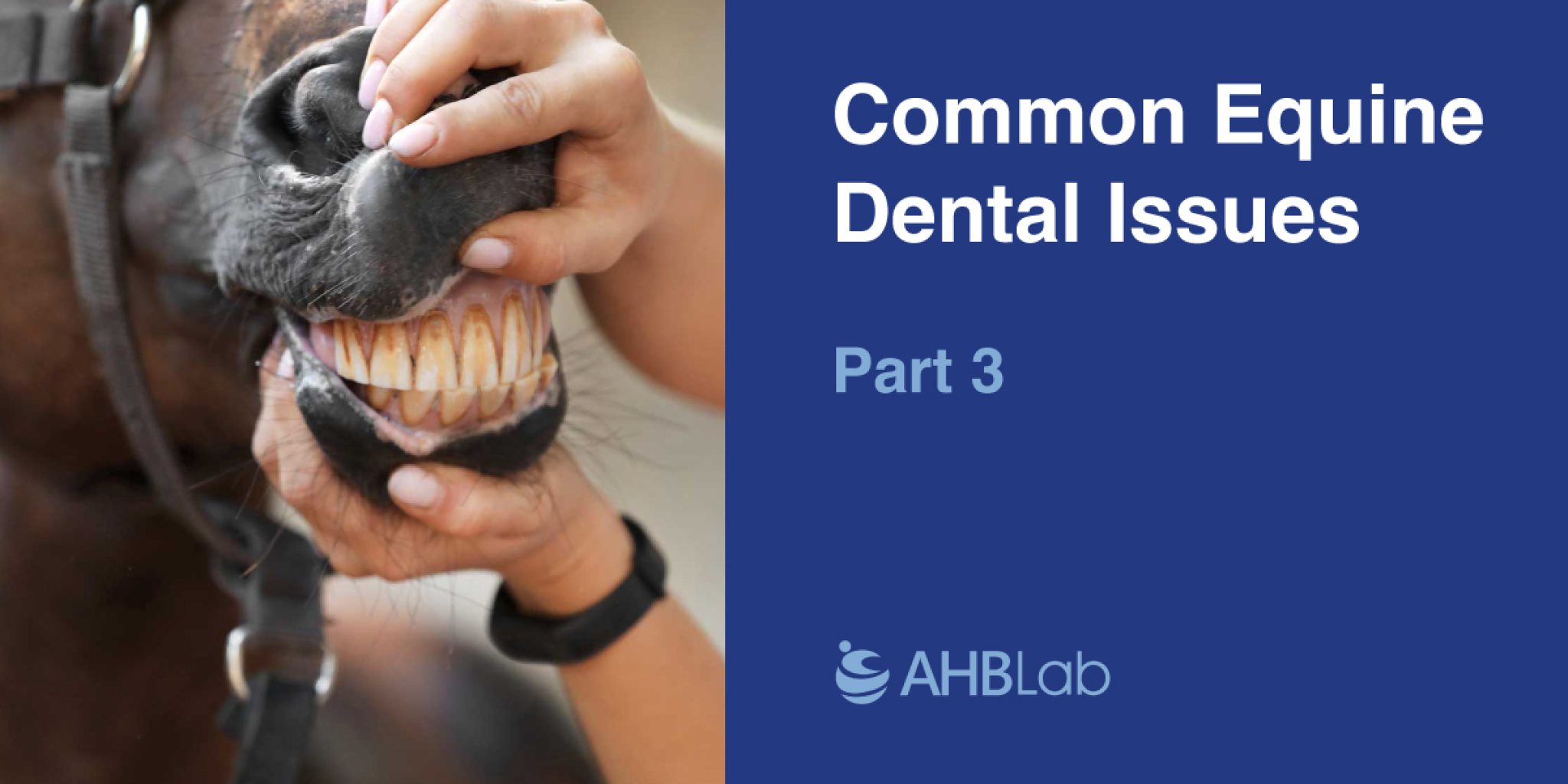歡迎閱讀我們系列的第 3 部分 常見的馬牙齒問題。如果您錯過了先前的討論,請藉此機會趕上 第 1 部分 和 第2部分 全面了解馬的其他常見牙齒問題及其對馬健康的整體影響。
本文將介紹三種常見的馬牙齒問題:階梯、牙齒斷裂或斷裂、牙裂。這些情況會對馬的舒適度和處理食物的能力產生重大影響,因此日常牙齒護理成為您應該為馬提供的最重要的服務之一。
1. 步驟
「台階」是指一顆牙齒比其他牙齒長,這會提供不均勻的研磨表面,而理想情況下,它應該是水平的以便正確咀嚼。這可能會導致對牙的不適和進一步磨損。
原因和影響:
台階通常是由於牙齒不正確對齊或不均勻磨損造成的。當一顆牙齒發育並長得比周圍的其他牙齒長時,它可能會過早地不均勻地磨損另一顆牙齒。如果不及時治療,可能會出現咀嚼困難、疼痛以及由此導致的營養不良。
治療:
可以透過定期牙科檢查來識別和治療步驟。馬牙醫將銼掉過度生長的牙齒,重新調整磨削表面。日常牙齒維護可以防止再次出現問題,並使牙齒均勻磨損。
2. 牙齒斷裂/折斷
外傷,例如咬住硬物或經歷事故,可能會導致馬的牙齒斷裂或斷裂。斷牙可能會非常痛苦,可能導致感染,並造成進食困難。
症狀:
牙齒斷裂或斷裂通常會帶來疼痛,並表現出進食困難、流口水、口臭或下顎腫脹。如果不及時治療,斷牙引起的感染可能會導致嚴重的併發症。
治療:
治療方法因骨折的嚴重程度而異:輕微的情況可能僅涉及牙齒的平滑處理,而嚴重的情況則需要拔牙或可能進行根管治療。顯然,這需要立即得到獸醫的關注,以消除疼痛、防止感染並防止口腔進一步受損。
3.牙縫(牙齒之間的縫隙)
縱裂-牙齒之間的異常間隙,食物可能滯留其中,導致老年馬牙齦發炎、感染和牙周病。
症狀和併發症:
患有縱裂的馬吃東西很困難,咀嚼不全的食物會掉落,並且經常表現出口臭。如果食物卡在間隙中引起牙齦刺激,一段時間後可能最終導致感染發展為牙周病。
治療:
間隙管理包括定期清潔,以清除可能滯留在間隙中的食物。有時,獸醫可能會稍微擴大間隙,這樣食物就不會堆積在那裡。如果牙齦疾病已經發生,可能需要額外的牙周治療。定期牙科檢查可以及早發現,防止病情惡化。
預防和日常護理
階梯、斷牙、牙縫等問題是可以預防的,主要原因是定期的牙齒護理。常規的洗牙可以保持牙齒對齊並防止過度生長。及早發現牙齒問題(例如注意飲食習慣的改變)可以避免日後出現嚴重的併發症。
透過讓您積極主動地照顧您的馬匹的牙齒,將確保它們保持舒適和健康,以充分發揮其能力。
AGRP® 和馬的牙齒健康
大多數馬的牙齒問題通常比症狀治療更複雜。 AGRP® 治療解決方案透過強大的抗發炎特性來解決馬常見牙齒疾病的根本原因,從而緩解症狀。這不僅對於減輕發炎很重要,而且對於組織修復和整體口腔健康也很重要。
AGRP® 增強膠原蛋白和纖維連接蛋白的合成-健康牙齦和口腔組織的主要結構成分。因此,它可以強化其結構並有助於治癒牙齦退縮和牙周病等病理疾病。其促進膠原蛋白合成的作用可促進組織修復,有助於長期維持口腔健康。
除了組織修復之外,AGRP ® 還能刺激口腔上皮細胞的增殖,這對於傷口癒合和進一步保護口腔組織至關重要。它甚至可以保護這些細胞免受自由基損傷,使組織保持強壯和健康。
抗發炎活性的進一步證據包括使用巨噬細胞模型的研究已證明的發炎抑製作用。 AGRP® 也能誘導關節軟骨中 I 型膠原蛋白的產生。現在,其好處已超出口腔健康範圍,並擴展到一般牙科護理。在您的馬的牙科常規中添加 AGRP® 將有助於減少發炎、加速癒合並預防未來的牙齒問題,從而讓您的馬長期保持舒適和快樂。





